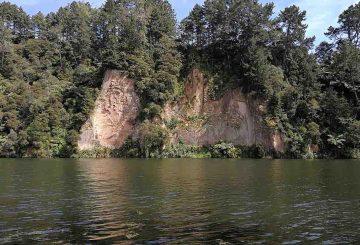Every building project must comply with the Resource Management Act 1991 (RMA) and the Building Act 2004 (the Building Act). These laws define the situations in which you need a resource consent and/or a building consent; and what you need to do to get them.The process for getting your consents will be easier if you know how the RMA and the Building Act affect your project, and what you need to do to have your consents approved.
The RMA protects land and the environment. Just because you own a piece of land doesn’t mean you can do what you want on it or with it.The RMA recognises that our neighbours and others in our communities can be affected by our ideas for using land and other resources – just as we can be affected by the plans of others. By protecting the environment, the RMA also ensures we consider the interests of the community and future generations
What is a resource consent?
The plans councils prepare set out which activities will require a resource consent. A resource consent is a formal approval for such things as the use or subdivision of land, the taking of water, the discharge of contaminants in water, soil or air, or the use or occupation of coastal space. It’s not just new buildings that may require resource consent. A new use of an existing building may also require a resource consent. Just as council plans vary, the need for resource consents varies from one area to another. If the activity you want to carry out isn’t clearly identified as either a permitted or prohibited activity in the plan, then you must obtain a resource consent. If you need certainty, councils can issue certificates of compliance for permitted activities confirming that the activity is lawfully established.
The Building Act covers the construction, alteration, demolition and maintenance of new and existing buildings throughout New Zealand. It sets standards and procedures for people involved in building work (including licensing of building practitioners) to ensure buildings are safe, healthy, and built right first time. It covers how work can be done, who can do it, and when it needs to be consented and inspected.
The Building Act as it relates to buildings is implemented by local district and city councils. Under the Building Act, the Building Code defines the minimum standards buildings must meet (to the extent required by the Building Act). In contrast to the plans prepared under the RMA, the Building Code provides a common set of minimum rules for the whole of New Zealand.
What is a building consent?
A building consent is a formal approval granted by your local council under the Building Act that allows a person to carry out building work. Building work includes work in connection with the construction, alteration, demolition or removal of a building. A council will issue a building consent only when it is satisfied the proposed building work will meet the requirements of the Building Code. You cannot carry out any building work unless you have a building consent. There are a few minor exceptions to this set out in Schedule 1 of the Building Act. For example, decks under 1m in height; and retaining walls less than 1.5m high that do not support any surcharge or any additional load such as vehicles on a road.All building work must meet the minimum requirements of the Building Code even if no building consent is required.
When first thinking about your building project there are some key things you need to do. Firstly, you need to be clear about what you want to build and how much it might cost. It may be helpful to write your ideas down, draw some preliminary sketches, and take photos to help you explain to others what you want to do.
Your local district or city council is your primary point of contact, and there are a number of people you will need to deal with there:
Customer service staff:
They may handle your initial queries and provide you with guidance and information. They may be supported by qualified resource consent and building control staff, or they may refer detailed queries to such experts.
Resource consent staff:
Often called ‘planning officers’ or ‘consents officers’, they will deal with your specific queries about the RMA, local plans, and resource consent requirements. They are likely to process your application for resource consent, should you need one
Building control staff:
Also called ‘building officials’, they will deal with your specific queries about the Building Act, the Building Code, and building consent requirements. They are likely to process your application for a building consent.
Experts:
If your project is complex, you will probably need expert help. You might need to employ a planner, designer, architect, engineer, surveyor, or other specialists to help prepare your applications for resource and building consents. Local councils may direct you to contact lists for such experts.

















































